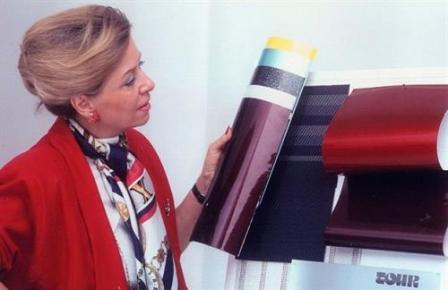No car has a claim to fame on a day to celebrate all things plaid quite like the Volkswagen Golf GTI – thanks to one woman’s pioneering choices that over the past four decades have become a symbol of driving enthusiasts worldwide.
[dropcap]T[/dropcap]he Volkswagen Golf GTI’s debut in 1976 caused a sensation. Even though only a few details distinguished it visually from the original Golf, Volkswagen—influenced by one of the company’s first female designers—succeeded in transforming the compact car into an affordable sports car for the masses and capturing the mood of the era.

Gunhild Liljequist—a porcelain painter and chocolatier candy-box designer by trade—was hired on to Volkswagen’s Germany-based Department of Fabrics and Colors in Wolfsburg in 1964 when she was just 28. Her work focused on paint hues, trims and interior detailing, so when the first Golf GTI came into production in the 1970s, she was tasked with designing various elements of its interior from a sporting angle. Liljequist’s genius centered on giving the GTI two distinct, but simple, textile elements: a tartan seat pattern and a golf ball-style gear knob.
“Black was sporty, but I also wanted color and quality,” Liljequist said. “I took a lot of inspiration from my travels around Great Britain and I was always taken by high-quality fabrics with checked patterns … you could say that there is an element of British sportiness in the GTI.”
And the golf ball gear knob?
 “That was a completely spontaneous idea!” Liljequist said. “I just expressed my sporting and golf associations out loud: ‘how about a golf ball as the gear knob?’”
“That was a completely spontaneous idea!” Liljequist said. “I just expressed my sporting and golf associations out loud: ‘how about a golf ball as the gear knob?’”
Although her ideas faced some resistance, the tartan seat pattern, now known as “Clark Plaid,” and golf ball knob would become an iconic part of the GTI.
For a woman who personally loved just black and white patterns, color illuminated Liljequist’s professional world throughout her 30-year career at Volkswagen. The 1960s to the 1980s were a highly creative and experimental time in car design, and Liljequist’s work helped to influence some of Volkswagen’s most iconic paint hues, trims and interior detailing, while designing some special models of her own.
 Beyond the Golf GTI, her two most notable contributions to the car world was her 1987 limited edition ‘Etienne Aigner’ Mk1 Golf Cabriolet—a car design influenced by the luxury maker of handbags, luggage and various other leather accessories—and her discovery of an iridescent, pearl color that she applied to a car’s surface, using a transparent foil. The metallic quality of paint on modern cars today is in part the result of Liljuquist’s experimentation in paint and coloring. Liljuquist retired in 1991, but her legacy is literally stitched into the fabric of Volkswagen.
Beyond the Golf GTI, her two most notable contributions to the car world was her 1987 limited edition ‘Etienne Aigner’ Mk1 Golf Cabriolet—a car design influenced by the luxury maker of handbags, luggage and various other leather accessories—and her discovery of an iridescent, pearl color that she applied to a car’s surface, using a transparent foil. The metallic quality of paint on modern cars today is in part the result of Liljuquist’s experimentation in paint and coloring. Liljuquist retired in 1991, but her legacy is literally stitched into the fabric of Volkswagen.




